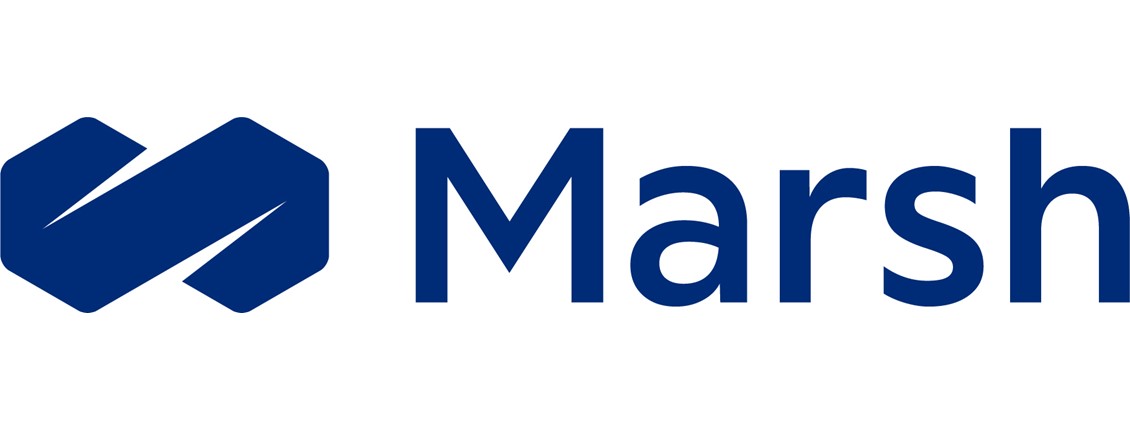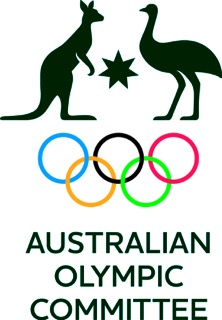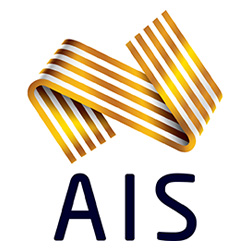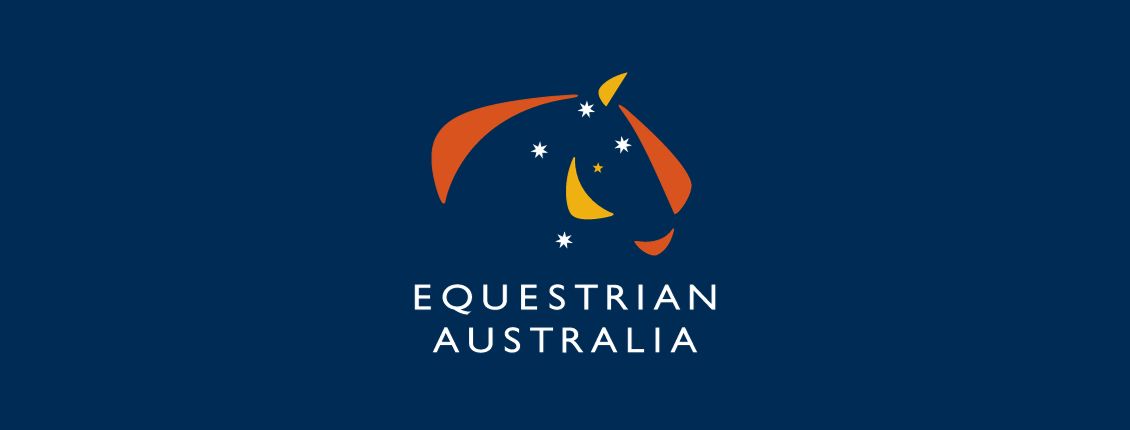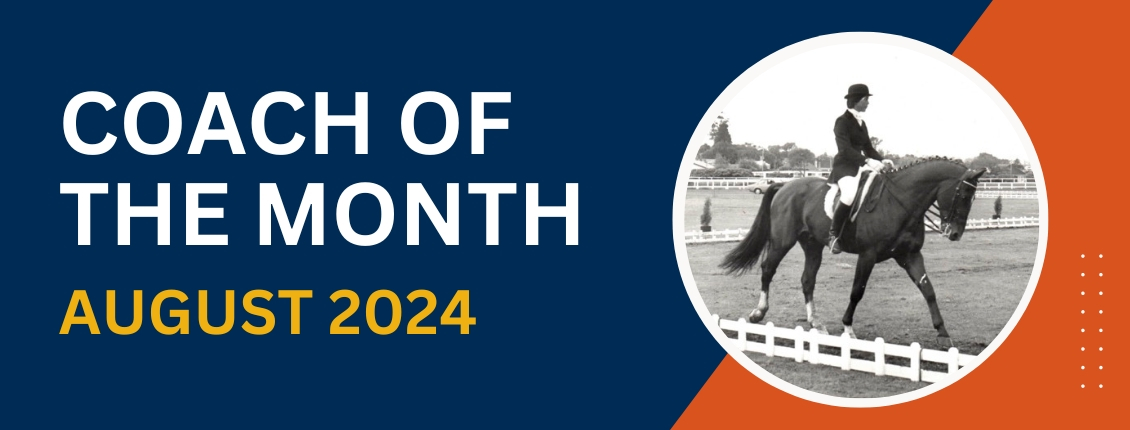
Jess Draper - Coach of the Month
Jess Draper is an EA Level 2 Dressage Specialist Coach who lives on the beautiful Bellarine Peninsula in Victoria. She is a former A Level Dressage Judge and was recently named the EA Coach of the Month, for August 2024.
Jess brings to her role the knowledge and passion of a strong family involvement in horses through competing, horse breeding, training, riding, coaching and judging. Jess is proud of the direction that her formative years have taken her.
Equestrian Australia caught up with Jess and asked about her life with horses and how this has ‘dovetailed’ into her involvement as an EA Coach. Even at a very busy period in her life, Jess has taken the time to share her story with EA members and said, “This is a wonderful time to be celebrating our love of horses, the Olympics give equestrians the opportunity to be inspired and focus on the next step of their own riding journey.”
As the daughter of the legendary horseman Alfred ‘Fred’ Hoevenaars, Jess grew up with a passion for horses and a knowledgeable father who encouraged her to pursue riding as a sport and career. She explained, “Our home was in Wallington, near Geelong in Victoria, where my father and mother built the Australian Equestrian Academy, commonly known as the A.E.A.”
“I rode throughout my childhood, predominantly as an Eventing rider and a career highlight was competing at the Gawler 3 Day Event in South Australia where I won the Dressage phase. It was a thrill to compete alongside Aussie legend Andrew Hoy.”
Jess told EA about the times when she travelled overseas and worked with the most successful and respected trainers of their era.
“My desire to become a professional equestrian instructor/coach came well before the NCAS (National Coaches Accreditation Scheme) was introduced in Australia. This model was the precursor to the present EA Coaching Committee that now administers the training and accreditation of equestrian coaches. My dad understood that riding instruction and horse training in The Netherlands and Europe is a respected profession that is supported by a system of training and assessing pupils and graduates, with qualifications that are recognised internationally.”
“I was keen to learn and during the period from 1975-1978 I worked in Germany and was based at Gestut (Stud) Nehmten, a progressive professional barn owned by Dr. Herbert Schnapka. The Olympic Eventing rider Karl Schultz was also based there and I accompanied Karl and his horse The Monk to the 1976 Montreal Olympic Games. This was a thrill and the experience taught me a great deal about high level competition and the attention to detail required to keep horses healthy and sound at home, during travel and as they acclimatised in a new environment.”
“I went on to have tuition at Warendorf (Germany) from the acclaimed Willi Schultheis. I also had the opportunity to train under the guidance of Rosemarie Springer, renowned for her soft, encouraging approach to horse training. I was then lucky enough to spend 3 months watching-on at the showjumping stables of the Schockemöhle brothers - Paul and Alwin. They are legends and respected the world over for training and competing some of the best jumpers known in the sport. I accompanied the brothers on their tour of Dublin, Wembley and Cardiff and had a ball, while learning a lot.”
“Rosemarie Springer is the person who has made a lasting impression on how I perceive the training of horses and riders. Her belief is summarised below:
- Look for softness and harmony between horse and rider.
- Always see the positives and be sure to reward.
- Do not focus on the little negatives in training.
Rosemarie emphasised that developing ‘a special relationship’ and working as a partnership with the horse is paramount. Her lessons are a ‘constant’ in my everyday teaching, to this day.”
“During that time, I regularly travelled from Germany to England in order to train at the Kenilworth National Equestrian Centre in Warwickshire, where I was studying to complete all 3 levels of the “British Horse Society” Instructors Course.
At Kenilworth, the syllabus covered:
- Instructors Certificate.
- Horse Knowledge and Riding Certificate
- Stable Management Certificate.
“There was a thirst for knowledge for all things equestrian in Australia that made a sound, progressive training program essential if the industry could grow and develop as dad predicted. My coaching qualifications allowed us to set up an academy that operated in a similar way to the best international riding centres in Europe and the UK.”
“The AEA trained working pupils in basic riding skills, horse care and stable management and my family is proud of the vision that brought professionalism to a sport that was very fragmented at the time. Many of these early ideals have been incorporated in the education systems of today and a number of very successful competitors and coaches got their start at the AEA.”
“As riders in Australia improved, the requirement for purpose bred horses with the movement and temperament suitable for all three Olympic disciplines, was apparent and the AEA was involved in the formation and establishment of an Australian performance horse breeding industry. Dad shared his knowledge of the assessment and classification systems that were already well established in Europe. These were amazing times that relied on the experience and drive of pioneers who forged a new era for equestrian sport in Australia. The humble beginnings are often forgotten when we look at the progress that has taken place in 5 or so decades.”
“My stallion Abel Tasman holds a special place in my heart. He was an imported Dutch Stallion and back then, the quarantine regulations required that horses spent time in England before coming to Australia. During the 6 months in quarantine, I took him to “Waterstock” and we worked with the well-known Swedish Eventing Instructor - Lars Sederhol and I was fortunate enough to have Lars’ assist me to ‘break-in’ Abel Tasman while I was having tuition from him. I learned a great deal from Lars’ knowledge and this has formed the basis of my future work with horses.”
“It was a long gruelling flight home to Australia via America. I had a very special bond with my horse and stayed with him in the hold of the aircraft for the entire flight (as you could in those days). The Australian touchdown was a moment of relief and excitement”
“1979 was a special time for me and Abel Tasman, as, with Gert Donvig and his imported Danish stallion Kilof McOhl, we were invited to do a Dressage Tour of New Zealand. These were the early days of Warmblood horses being on display outside Europe. it was a memorable ‘first’ to have 2 imported Warmblood Stallions on display in our region of the world. These early days with our stallions created huge interest and enthusiasm with many ridden demonstrations and competition performances to follow.”
“In 1980 I was privileged to do a night time Dressage Pas De Deux with Gert (Donvig) at the Geelong Show. This was arranged by Showgrounds Officials as a tribute to my gravely ill Mother Nonica, who was transported from hospital to watch the performance. Tragically, she passed away not long after this, but I was so proud to have been able to perform for my mother as she was a big part of life as an equestrian.”
“Coaching was an easy fit for me, because as a young girl growing up, I always wanted to be a school teacher. However, a passion for horses soon changed my mind and I took advantage of the experience gained teaching and riding at the A.E.A. to become an Equestrian Coach.”
“I enjoy coaching, whether my clients are 8 or 80 years of age, all I need is for them to be enthusiastic and enjoy being out with their horse and open to learning. The enjoyment I get from coaching is part of the reason I teach, the wonderful lasting friendships that I have made with clients and their families is a huge factor for me.”
“As a specialist Dressage Coach I explain to my students that taking their horse into the Dressage arena is similar to a session in the Gymnasium! It is all about connection with the horse, routine and teaching different levels of “gymnastic exercises and movements.”
When teaching, I aim to achieve the following:
- Build trust, confidence and a relationship with the rider and horse.
- Use exercises and figures to create suppleness, strength and elasticity.
“I believe that from good basics the horse and rider can progress through the Dressage levels in a sustainable and harmonious way, ensuring that the horse will go on to have a long, happy and healthy life.”
“My advice to those aspiring to become an Equestrian Coach is:
- Be a kind, sympathetic and thoughtful person, as it is not all about coaching.
- We as coaches have to remember that people are individuals and could be going through difficulties that have an impact on the day.
- Be aware and sensitive to your student and their horse…always look for the positives.
- Keep it safe, fun and fulfilling.
“Coaching horse riders is one of the jobs that fits well into the saying ‘If you love what you do, you will never have to work a day in your life’ and I know that is true of anyone with a sincere love of horses, a genuine interest in helping their clients and a strong sense of pride in the Australian horse industry.”
“I am proud to be EA’s Coach of the Month for July 2024, a time that the world is celebrating horses through the FEI slogan, ‘A Bond Like No Other’. Thanks to Equestrian Australia for the opportunity to share my story and encourage the future generations of EA Coaches. Systematic education is important for the future of the sport and wellbeing of its human and equine athletes.”

